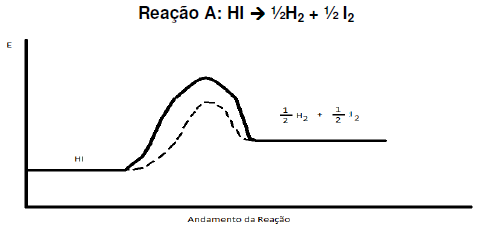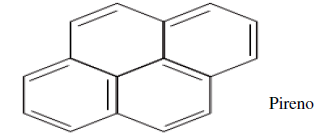Questões de Vestibular UEPA 2011 para Vestibular, PROVA OBJETIVA – 1a Fase
Foram encontradas 60 questões
Na expressão

o valor de x é:
Sobre a nomenclatura para o Ag2S, temos como nome o:

Marque a opção correta:
A partir dessas reações, qual a massa mínima (em quilograma), por dia, necessária para eliminar todo o SO2 formado? Para isso suponha que o rendimento é de 100% para as reações citadas.

(Herbert Emanuel, do Livro “Nada ou Quase Uma Arte”)
O poema faz referências explícitas a um filósofo pré-socrático. Na história da filosofia, entende-se por pré-socráticos aqueles filósofos que antecederam a Sócrates. Entre as alternativas abaixo, assinale a que contém somente filósofos pré-socráticos
(Nicola, Ubaldo. Antologia Ilustrada de Filosofia. Editora Globo, 2005.)
O pensamento de que filósofo é expresso pelo texto anterior?
I. A sociologia deve se preocupar em somente explicar a sociedade.
II. A sociologia tem como função encontrar soluções para a vida social.
III. A sociologia tem como função buscar explicações para os problemas sociais.
IV. A sociologia tem como única função encontrar soluções para a vida social.
V. A sociologia tem também o papel de comparar as sociedades e proceder a classificação das espécies.
Para ele, esses fatos são tratados como “coisas”.
Analise os itens abaixo e assinale a alternativa que corresponde às três características referentes aos fatos sociais de que trata Durkheim.
1. Coercitividade: os fatos sociais exercem força sobre os indivíduos levando-os a agirem de acordo com as regras sociais dominantes, independentemente da vontade dos indivíduos;
2. Exterioridade: os fatos sociais são exteriores e anteriores aos indivíduos, ou seja, as regras sociais, os costumes, as leis, existem anteriormente aos indivíduos;
3. Generalidade: os fatos sociais são gerais, repetem-se em todos os indivíduos ou, pelo menos, na maioria deles.
4. Historicidade: os fatos sociais são estudados pela ciência que estuda o homem e sua ação no tempo e no espaço.
5. Objetividade: o fato social é caracterizado pela qualidade daquilo que é objetivo, externo à consciência, resultado de observação imparcial, independente das preferências individuais.
I. Indígenas da Amazônia.
II. Carapirás do Amapá.
III. Sem-teto do eixo Rio – São Paulo.
IV. Populações Tradicionais (caboclos e ribeirinhos).
V. Moradores das áreas de ressaca no Amapá.
One of the negative effects of industrialization on human activity and the environment is the production of excessive light. Most people do not consider the surplus of artificial light as a form of pollution because it is not permanent; all we must do is collectively turn out our lights to make it disappear. In reality, however, such a solution is unrealistic because our society needs artificial light to function. Light pollution is mainly caused by lighting systems that are misdirected, excessive, inefficient or unnecessary. The negative effects of light pollution on human activity are numerous. From an economic point of view, for example, the use of excessive lighting or unnecessary lighting constitutes a waste of energy that is costly to both the individual and to industries. On a larger scale, excessive lighting can have an impact on global climate change if the required electricity was generated by burning fossil fuels. Wildlife and plants are also affected. For example, nighttime lighting can confuse animals that migrate (like migratory birds), can modify predator-prey relationships, and can even alter competitiveness within the same species.
One of the negative effects of industrialization on human activity and the environment is the production of excessive light. Most people do not consider the surplus of artificial light as a form of pollution because it is not permanent; all we must do is collectively turn out our lights to make it disappear. In reality, however, such a solution is unrealistic because our society needs artificial light to function. Light pollution is mainly caused by lighting systems that are misdirected, excessive, inefficient or unnecessary. The negative effects of light pollution on human activity are numerous. From an economic point of view, for example, the use of excessive lighting or unnecessary lighting constitutes a waste of energy that is costly to both the individual and to industries. On a larger scale, excessive lighting can have an impact on global climate change if the required electricity was generated by burning fossil fuels. Wildlife and plants are also affected. For example, nighttime lighting can confuse animals that migrate (like migratory birds), can modify predator-prey relationships, and can even alter competitiveness within the same species.
One of the negative effects of industrialization on human activity and the environment is the production of excessive light. Most people do not consider the surplus of artificial light as a form of pollution because it is not permanent; all we must do is collectively turn out our lights to make it disappear. In reality, however, such a solution is unrealistic because our society needs artificial light to function. Light pollution is mainly caused by lighting systems that are misdirected, excessive, inefficient or unnecessary. The negative effects of light pollution on human activity are numerous. From an economic point of view, for example, the use of excessive lighting or unnecessary lighting constitutes a waste of energy that is costly to both the individual and to industries. On a larger scale, excessive lighting can have an impact on global climate change if the required electricity was generated by burning fossil fuels. Wildlife and plants are also affected. For example, nighttime lighting can confuse animals that migrate (like migratory birds), can modify predator-prey relationships, and can even alter competitiveness within the same species.
One of the negative effects of industrialization on human activity and the environment is the production of excessive light. Most people do not consider the surplus of artificial light as a form of pollution because it is not permanent; all we must do is collectively turn out our lights to make it disappear. In reality, however, such a solution is unrealistic because our society needs artificial light to function. Light pollution is mainly caused by lighting systems that are misdirected, excessive, inefficient or unnecessary. The negative effects of light pollution on human activity are numerous. From an economic point of view, for example, the use of excessive lighting or unnecessary lighting constitutes a waste of energy that is costly to both the individual and to industries. On a larger scale, excessive lighting can have an impact on global climate change if the required electricity was generated by burning fossil fuels. Wildlife and plants are also affected. For example, nighttime lighting can confuse animals that migrate (like migratory birds), can modify predator-prey relationships, and can even alter competitiveness within the same species.